|
Have you ever had your life completely fall out from under you on a beautiful day? Maybe you lost a loved one, or your job, or had your understanding of life completely shattered. Or maybe it was something more subtle – perhaps another battle in the war against your personal demons. Perhaps even it was because someone else hurt you deeply. Whatever the case, it leads to one of the most surreal experiences life has to offer. Inside your world is crumbling, yet as the sun shines down on your face and a slight breeze wafts by, you feel a strange sort of conflict – as though the weather is somehow inappropriate, as though life ought to be like a movie and bad things should only happen on grim, overcast days. And there's something impossibly strange about feeling that way. We become a bit mixed up, as the natural good mood that the weather provokes becomes entangled with the hurt and despair that mires us down, and all of a sudden we're stuck with some sort of strange sense that our words fail to express. The human experience is often paradoxical. A paradox is often thought of as being the same as a contradiction, but there is one important difference: A paradox is when you have two or more contradictory statements that are nonetheless both true. This is a core part of what it means to be human – not only are we capable of two contradictory emotions (like, for example, happiness and sadness) but we are capable of feeling both at the exact same time. This is one of the reasons why I find Christianity to be so existentially compelling: Paradox is at its very core. It is the story of the fully divine become fully human; the Infinite become finite; that which is undying suffering death; that which is dead knowing life. It is in the message of Christianity that we see these notions reflected, for the Christian life is a call to neither joy nor suffering, but rather both at the same time. More than that, it reflects our own experiences. It does not offer us pat answers - “When you are sad, just be happy!” and the like – but instead meets us where we are and speaks to our core nature. It takes us and shows us that there is beauty in ugliness – and often ugliness in beauty (after all, what better candidate is there for paradoxically being beautiful and ugly at the same time than the crucifixion of Christ?). It shows us that at the height of our despair, there is always reason to rejoice – and that at the height of our joy, there is often reason to mourn. It is the triumph of light over darkness, but also the acknowledgement that darkness has not left us unscathed. This may seem like a bit of a strange post, but I think it's something that's important to grapple with. As Christians, too often we try to take the paradox out of our faith, to instead scrunch it into neat little boxes that fit a linear logical progression. But in doing so, not only do we taint the message of the faith, but we end up missing the powerful personal connection that this message contains. We dodge away from the difficult and harsh truths of life and instead replace them with a sort of Sitcom Faith, where every problem can be neatly resolved and hugged out within twenty-two minutes if only we pray enough or read the Bible enough or have enough faith. We perhaps become so embroiled with seeking to present a faith that brings joy that we neglect the nuance of Christ's teachings, and as such we end up presenting a belief that feels shallow and unrealistic to others, and that stifles our own flame of faith. The Christian life calls us to rejoice, yes – but it also calls us to “mourn with those who mourn,” as it were. In other words, it calls us to paradoxical living, where mourning is a form of joy; where we acknowledge that Christ has triumphed over sin and darkness but do not thereby turn a blind eye to these things, but rather face them head-on. Look, I'm gonna level with you: I have no idea how you might apply this idea. Maybe it'll help you navigate the tension of finding joy when your life is hell, or conversely remembering the sorrow of others when your life is pretty awesome. Hopefully it'll bring some sort of encouragement to anyone who feels trapped by paradoxical experiences. Maybe you'll read this and think “How bloody useless. What a waste of time.” But whatever it is, I ask you to please think about it. --- Ryan Killeen is a seminary student at McMaster University. When he's not vainly attempting to contribute to academia, he can usually be found playing guitar, reading, or typing rubbish on the internet. We would love to hear from you. There are several ways to communicate and connect:
Join Fig Tree's Subreddit Follow our Pinterest page Like us on Facebook Follow us on Twitter (This meditation is the last in a series regarding the communion table) The bible is a collection of certain letters and books put together to create a canon. Basically, early in the Christian story there were tons of letters and books different local churches collected and used. Some of them were really good and some of them were complete frauds. A group of early Christians got together and picked the ones they considered authentic. While there are those who might argue for or against some of the books included or excluded, for the most part they did a good job. This is why, when you open up your bible to the New Testament the first four books basically tell the same story. (This would be Matthew, Mark, Luke, and John.) The reason these early Christian Fathers chose four of the same story is simple and I will explain. Eye witness accounts are always more reliable when there are more than one set of eyes to share the account. It is like the Gospel writers are the witnesses giving testimony to the event. They are not all the same because each writer has their own perspective, but they are all important.
This impacts our theme for the table because both the Gospel of Matthew and Gospel Luke share one of Jesus' sermons. Their account, as it is with the writings of eye witnesses, vary in some subtle but important ways. In Luke, the need is physical. As we need to eat to survive in this world so the Gospel of Luke recalls Jesus saying that God blesses the poor because their richness is in the God's kingdom. The need is with those who cry and hunger physically. The Gospel of Matthew, on the other hand, shows Jesus focusing on the spiritual need. The focus is on grief, obedience, mercy, humility and peace. At the table our soul needs to be fed as much as our stomach. Jesus played in both the physical and spiritual world. He physically ate and drank with people, fed people and healed people. He spiritually ate and drank with people, fed people and healed people. He was completely concerned about the body and the soul. (This meditation is the fourth of a series regarding the communion table) This meditation was influenced by Chapter 8 of Sunday Dinner by William Willimon. It is a great, easy to read book on Communion.
Perhaps there appears to be a contradiction of the table being a sacrifice and a meal, but this apparent contradiction is the easiest to understand. Once I explain it you will see how genius Jesus was using a meal as one of the greatest symbols of the Christian faith. Each and every time we eat we are participating in a sacrifice and a meal. Let's say you and I are going to sit down and eat a fried chicken dinner. On the table is a huge bowl of mashed potatoes, a heaping portion of homemade macaroni and cheese, and good ole' buttermilk biscuits. Of course in the middle of table, smelling up the entire room, is crispy and greasy fried chicken. (I hope your mouth is watering because mine is.) Before a bite even comes to your mouth sacrifice is all over the table. First there is the sacrifice of life. The chicken's life had to be sacrificed in order to make the meal. The future life of eggs had to be sacrificed to make the biscuits and possibly the coating for the chicken. (Depending on how it was done.) The cow gives up the milk and butter. The grain is destroyed to make the flour. Sacrifice. Second, time was sacrificed to make the meal. Americans tend to take time for granted. Even frozen fried chicken purchased at the grocery store takes time to make. As the saying goes, time is money. Perhaps we don't consider what we do as part of the sacrifice of the table, but we should. Every time we come to the table for communion we are taking our joys and sorrows; our successes and failures with us. It is not bad to take sorrows and failures to the table as long as we realize we are bringing those things. Jesus made failure at the table an option when he brought up Peter's and Judas' failure before they had ever done it. Judas ran away from it while Peter did the correct thing and confronted it. None of that discounts this is meal, a celebration. We gather. We commune. (There is a reason we call this communion.) I believe there is no better way to connect than over a meal. I must confess, I enjoyed the meals at the leadership conference, I recently participated in, because I talked more over food. Aside from my cohort group, every meaningful connection I made was during a meal. Food puts our guard down and allows us to find the most primal of connections: we all need to eat. No wonder Jesus ate with anyone who would take him in: tax collectors, Jews, Gentiles, Priests, Lawyers, friends, enemies, and complete strangers. Another way to look at it: The table is all about give and take. Sacrifice is what is given to the table. Jesus gave the ultimate sacrifice. We also bring our sacrifice to it. The meal is what we take from the table. Without both give and take the table breaks and ceases to function. Next week we will wrap it all up: How do we understand the table both being a spiritual and a physical meal? (This meditation is the third of a series regarding the communion table) The health of the table appears to be a paradox. We are called to wholeness, and at the same time called to brokenness.
The bread is broken. Paul tells the Corinthians that we are all part of the Body of Christ. Need we not forget, Jesus, at the communion table lifts the bread and says, "This is my body broken for you." Wellness is usually follows a path of first being broken. Consider healthy brokenness. When a bone in the body heals incorrectly it must be re-broken in order to be reset. In the same way there comes times when our soul heals incorrectly and it too must be broken again to be reset and heal correctly. Take Jonah for example. As a prophet, someone who is told to tell the people something and they do, Jonah didn't want to listen. God put him in the belly of a big fish and after he was suitably broken he did what was right. When light is needed right away a light stick has a tube of glass in it separating two chemicals. When the glass inside is broken the two liquids mix together creating light. In the same way there comes times when people can break through barriers to connect with those we haven't been able to before, allowing God's light to shine. Jesus broke barriers all the time and usually at a meal. He ate with Jewish leaders, tax collectors, Gentiles, the good, the bad and the multitude. The cup is whole. Throughout the text of communion the cup remains whole and connected. We, as participants are asked to take from it, but the cup never breaks. Jesus gave us many images of wholeness. My favorite is the parable of the sheep. If a shepherd has 100 sheep and loses one, would he not go out and find the one? (The answer is yes. The shepherd would go out and find the one, because God wants wholeness.) My second favorite is the prodigal son, a story about a son who leaves the parent only to discover everything he really needs is home. The parent welcomes the child back with loving and open arms, just as God welcomes us back when we turn away. Just like brokenness, wholeness can hurt. From the perspective of the 99 sheep or the son who stayed home, it can be difficult to see God's reasoning for wanting complete redemption and not just the "faithful." (Yes, I put that in quotations for a reason.) The Christian Church (Disciples of Christ) believes in an open table. All are invited to participate in communion. For me this is just an obvious truth. It is not I or any other person who invites people to the table. It is God who sends the invitations, we are just the party hosts. Humanity is not in control. We pretend we have control. We attempt to take the reins, but our attempts are false. Just as it is not a church or a group of people who have and will employ me. God is my employer. It is the people who are in the accounting department. We may own the wood or metal used to make the communion table. Someone might have bought the bread and juice. The table clothe might have been donated by a modern saint of the church, but God is the ultimate owner of it all. Next Week: How can we resolve how the table as both a sacrifice and a meal? (This meditation is the second of a series regarding the communion table) What does it mean that the communion table is a place where we can privately share a moment with God while also participating in a community event? How do we resolve this apparent contradiction?
We are, as individuals, invited to the communion table. There is no one just like you. You are unique. We are not Stepford wives: there is no perfect way to be or a perfect way to look. There is beauty to be found in our individuality. We can see individual change in biblical heroes like Moses. He was a prince of Egypt and had individual experiences with God through mountain experiences and a burning bush. We can also see individual invitation through great minds outside of the bible: Augustine and his sermons. Martin Luther and his list nailed to a church door. Karl Barth and perfect grace. At the same time we are invited as a community to the communion table. Many communion tables are set up where we are like pupils sitting before the great teacher God. Communion table is up front while we all sit at our pews or desks waiting for the lesson. Conversly, Jesus first established communion to be more like the Knights of the Round Table. We are in relationship, and can see everyone we are communing with. We can understand community invitation when we recall the Israelite journey in the wilderness, Jonah and the Ninivites, and the call of the Disciples. Outside of the bible we can see the power of the community throughout history. There were the Newsies, a group of kids who were not being paid a fair wage. For a brief moment in history they worked together to gain fair wages. Then there is Martin Luther King Jr and his sit ins. The civil rights movement was won due to the pacifist gatherings of King's followers. We can resolve this contradiction because of a symbol Paul gave to the Corinthians nearly 2,000 years ago: The body of Christ. A human body is both made of individual parts and at the same time is one. We can put our focus on either the parts or the whole body but we would be missing half the story. God loves our unique individuality and God loves when we can work together moving mountains. Harmony comes from knowing both of the above ideas are true. The community is better when individuals care for themselves, and a person cannot truly be whole without the help of others. The table reminds us how impossible it is to choose individual or community. I am an individual within the community. The community is full of individuals. Next week: How do we resolve the health of the table? How is the table both broken and whole at the same time? (This meditation is the first of a series regarding the communion table) The draw of the table appears to be a paradox. We are called to be participants, feasting in communion, and we are called away to be messengers for others. These two items appear to be contradiction to one another. How do we understand this apparent contradiction as worshiping believers?
First of all, Jesus was a celebrator of food. Meals were like glue for him, binding people together in conversation. When Zacchaeus, the tax collector, was up in a tree, just for the chance to see Jesus, it was Jesus who turned the situation around. He wanted to go to his house and share a meal. Jesus' first miracle took place during a wedding celebration. Jesus, on more than one occasion, ate at Mary, Martha, and Lazarus' house. It is no wonder the biggest metaphor he leaves with us is the communion table. Yet, this celebration is not a gluttonous event. It is not Valhalla. In fact, when we are invited to the table the message once we get there is "go." "Go to the people of all nations and make them my disciples. Baptize them in the name of the Father, the Son, and the Holy Spirit" (Matt 28:19) Jesus asks Peter if he loved him. Peter three times says he does and three times Jesus tells Peter in different ways, "Feed my sheep." The paradox is resolved because the opposing force of the table is set like magnetic poles. It turns the table into an electromagnet, intensifying the connection between us and God. We are both drawn to and pulled away from it because that is how the symbol of communion is powered. If either the pull or the draw ceases to exist the power escapes the table. Next week: The paradox of relation. How is the communion table both a personal and group experience? 1 Corinthians 11:23-26 CEB The Christian Church, (Disciple of Christ) denomination is a church of the table. Every time we gather as a worshiping body of believers we have communion. In the bible it sits as book ends on either side of Lent.
Lent comes from the Catholic tradition. It is the forty days leading up to Easter. It is often tied to the wilderness time of the Israelites and Jesus. Lent begins with the ashes of the previous Palm Sunday. (Palm Sunday is the Sunday in the Christian Calendar where we celebrate Jesus' entrance into Jerusalem days before he would be crucified. In traditional churches the Palms are kept, dried and burned into ashes for the next Ash Wednesday.) If this is the first time learning about these events you probably heard of Mardi Gras. Mardi Gras, also known as Fat Tuesday, is traditionally the opportunity to use the fat in the house before the fast that is lent. Traditionally the fat and yeast is used to make pancakes. Now most know it as a crazy celebration in New Orleans. This all ties into the communion table. Jesus loved illustrations. Early in my Christian life I was drawn into the narrative style Jesus used to explain simple and complex truths. Sheep. Goats. Vineyards. Wheat. Food. Now, 2,000 years disconnected from the stories, we lose how relational those stories were. Jesus used objects and stories people came in contact with all the time. The biggest illustration happened around a meal. Perhaps the customs are different, but everyone needs to eat. Food is universal. Such a simple meal packed with meaning. Many great books have been written about communion. As short and sweet the words about communion are there is so much one can say about them. I would like to talk about is the apparent paradox. As a lenten series I am going to spend the next few weeks discussing the table. How is it that we are drawn to and away from it? How can the table be for just us and for everyone at the same time? How is the event both broken and whole simultaneously? Is this a meal or a sacrifice? How is it both? How is this both a spiritual and physical event? So today, as a way to prepare yourselves for the upcoming weeks, ask yourselves those questions. What does the table mean to you? |
Categories
All
Archives
October 2023
|


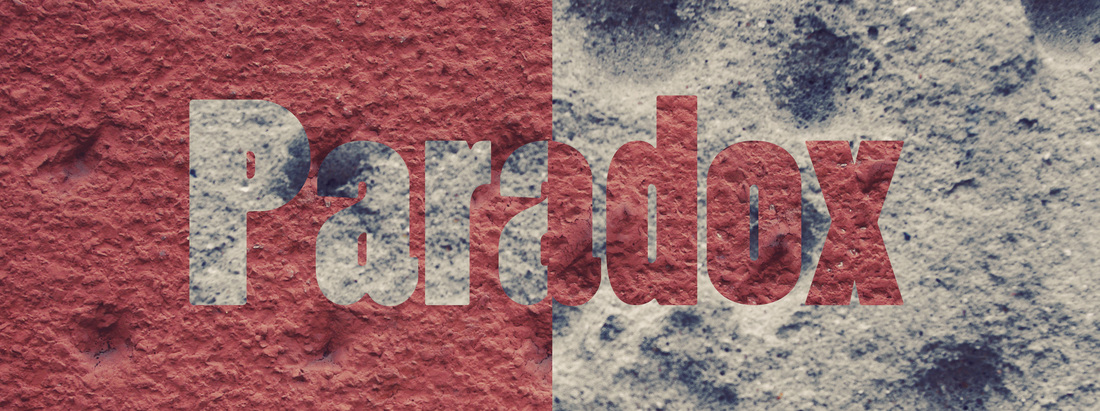
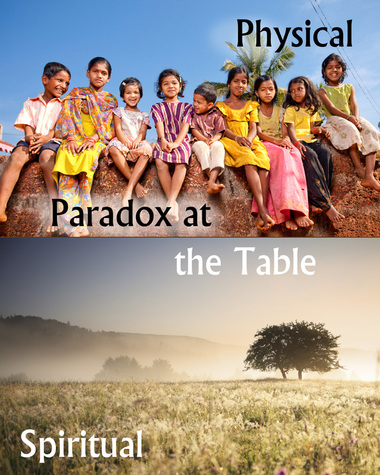
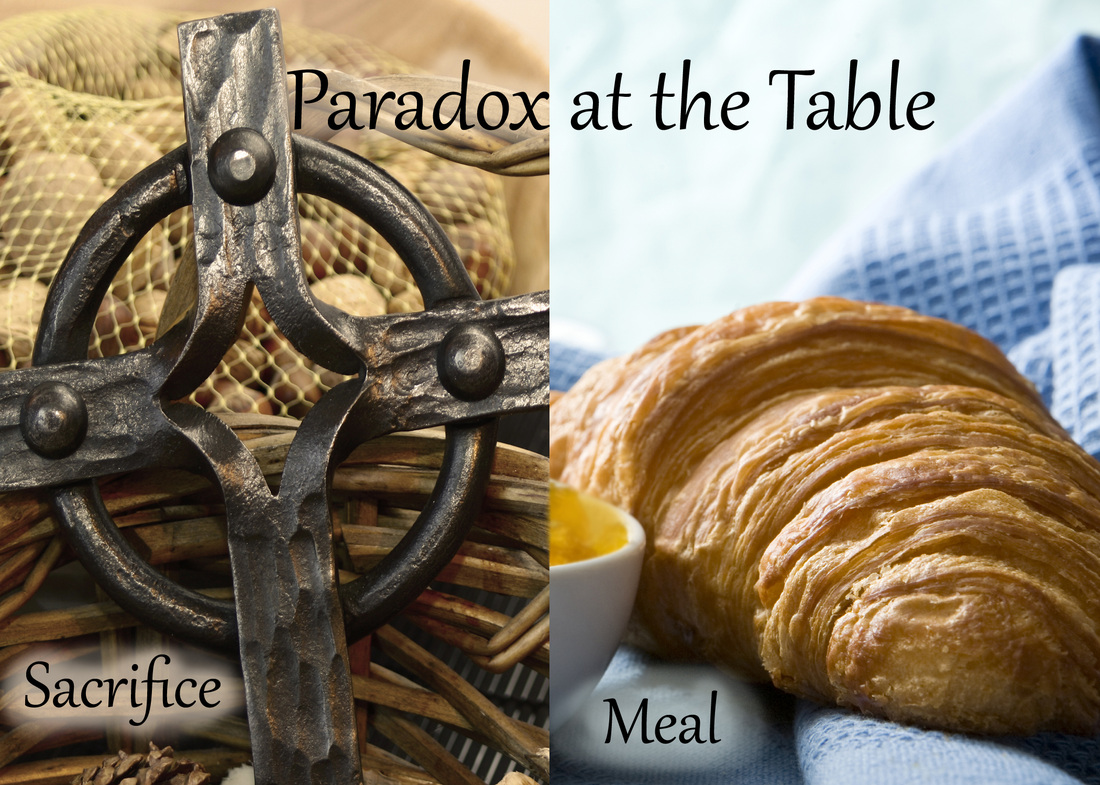
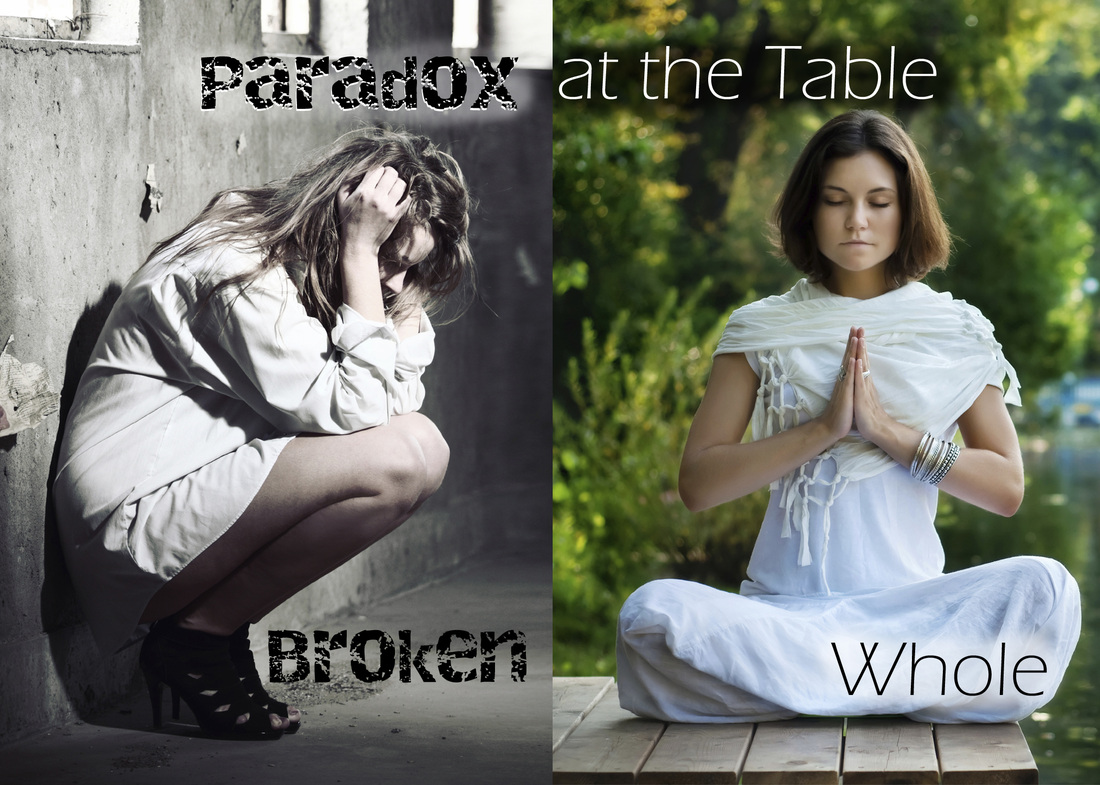
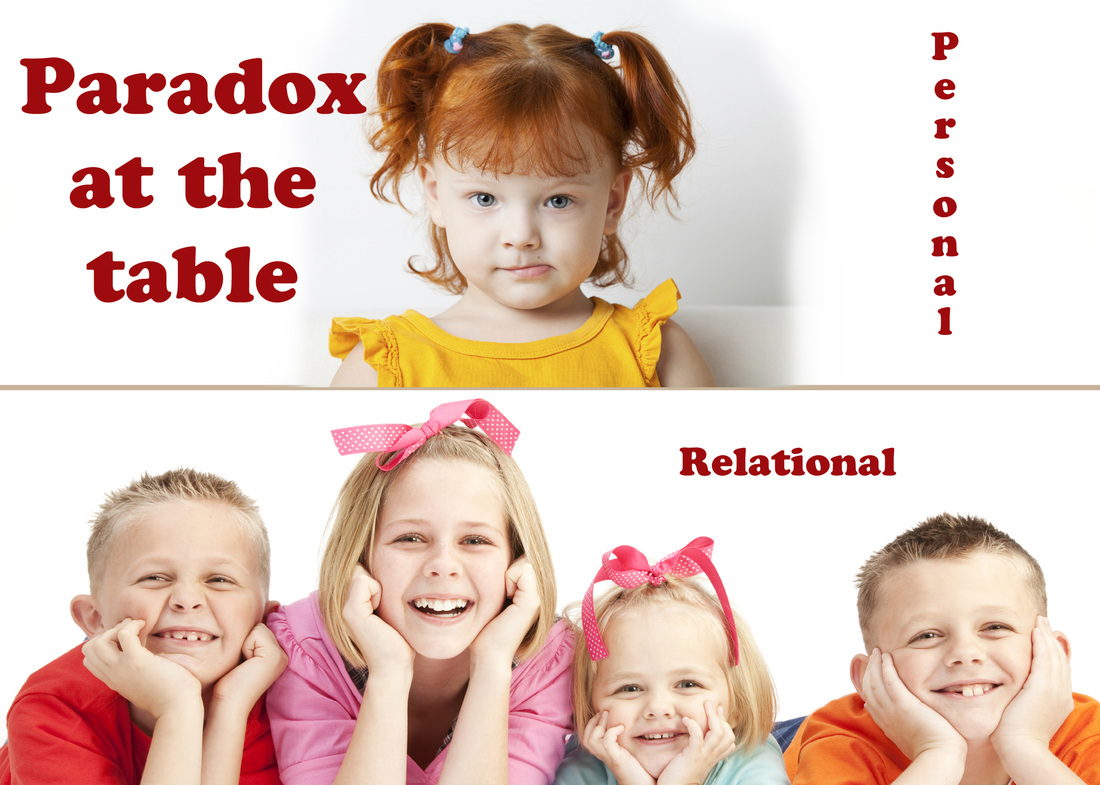
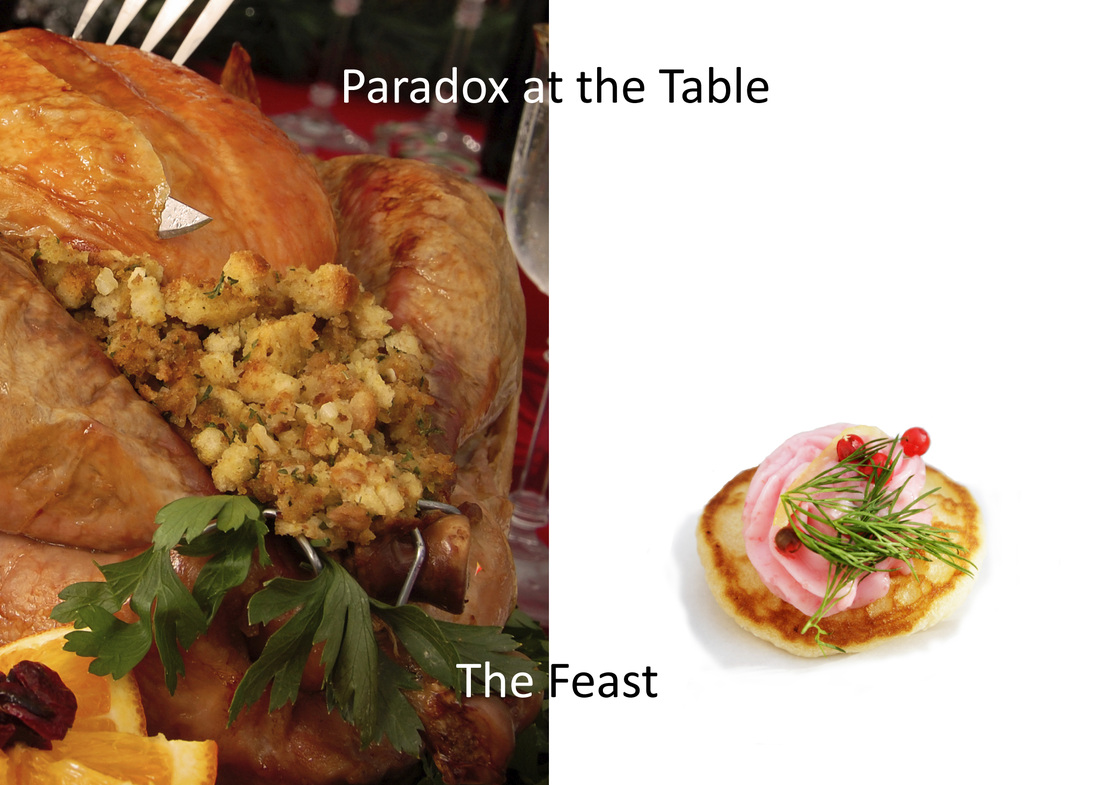
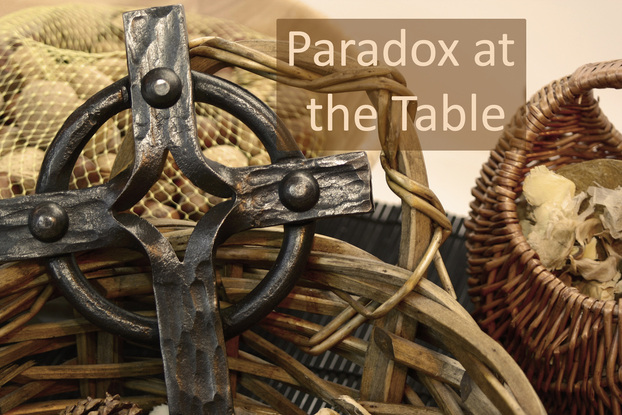

 RSS Feed
RSS Feed